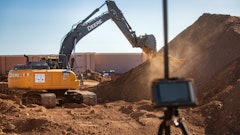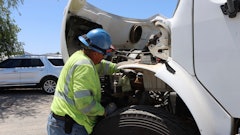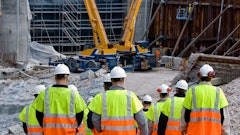
Exciting times seemingly lay ahead for the construction industry, despite the need to contend with a dynamic operating environment consisting of rising interest rates, persistent inflation, supply chain bottlenecks, and skilled labor shortages. These are real problems, however, there are plenty of reasons to have optimism. Chief among them is that demand remains high for U.S. housing, while supply is low.
RSM International Ltd. estimates a housing shortage of more than 3.5 million units, representing approximately two years of annual new construction at average building rates1. Although it is true that ballooning interest rates have quieted new home builds, the effect has been counter-balanced by the fact many homeowners locked in lower multi-year mortgages in 2020 and 2021, resulting in few homeowners selling existing structures.
It is not just residential construction that is gaining steam. Supply chain bottlenecks across the construction supply chain have largely subsided, causing price increases to slow in both occasion and magnitude, providing operators with much-needed clarity into their expected project costs and time-to-completion. The volatility over the past 24 months resulted in industry-wide margin pressures as operators struggled to pass on price increases; similarly, the normalization has resulted in enhanced profitability.
Combined with a recalibrated supply chain, arguably more durable than pre-pandemic, is record public sector spending on new infrastructure projects for the next decade. The injection of capital into the industry, particularly in chip manufacturing, clean energy, and national infrastructure segments, has generated significant backlogs that support project and revenue expectations for the near- to long-term. As of August 2023, the average construction backlog was 9.2 months, representing a 15 percent increase from the 8.0 months in January 2022.2
Increased demand is great, but operators are now navigating the problem of not having enough people to complete projects on time. The sector averaged more than 390,000 job openings per month in 2022, a record high, while unemployment sat at 4.6 percent, second-lowest in history only to 2019’s rate of 4.5 percent.1 The industry has taken a creative approach to tackling a shortage of skilled workers to fill jobs while facing backlogged projects: mergers and acquisitions (M&A) have provided buyers the opportunity to address these issues efficiently and quickly, improving their bandwidth and ability to take on more projects and ultimately resulting in increased market share.
With active financial and strategic buyers, valuations across the construction and industrial sectors remain strong. High-quality, “A-grade” companies continue to receive premium valuations as buyers have prioritized quality over quantity. The environment uniquely favors first-class assets on the market with exposure to aforementioned industries & end markets.
When it comes to M&A, operators can turn to a variety of buyers. Owners of construction companies who are not looking to sell to a competitor or be part of a portfolio of investments but would like to reap the rewards of an exit may consider an Employee Stock Ownership Plans (ESOP) as an exit strategy. ESOPs allow sellers to realize the value for their company while retaining legacy and rewarding their employees.
ESOPs also offer the potential for meaningful tax advantages for the selling shareholder(s) and the company. An experienced advisor can help business owners evaluate their options effectively, such as learning more about the buyer types, sale process, transaction structure, and the results for shareholders as well as the potential outcome for management and employees if an owner were to sell their business to private equity, a strategic buyer, their management team, or their employees.
[1] U.S. Census Bureau [2] Associated Builders and Contractors


























